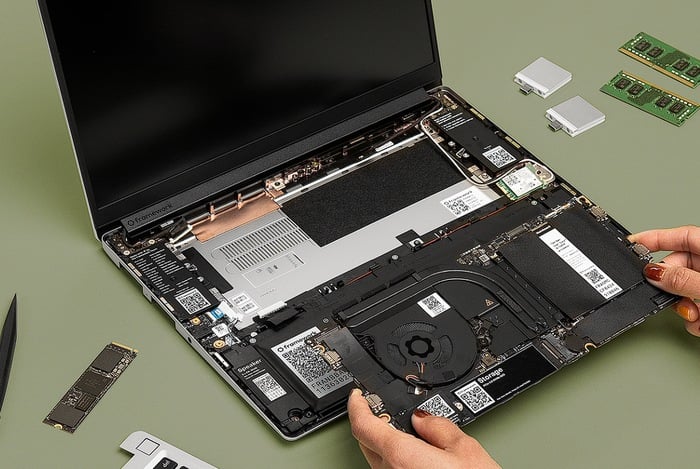The world of laptops has been evolving at a rapid pace, with manufacturers constantly striving to outdo each other in terms of performance, design, and innovation. One such manufacturer that has been making waves in the industry is Framework, known for its unique upgradable laptop design. The company’s latest offering, the Framework Laptop 13, is a testament to this innovative approach, featuring AMD’s new Zen4 U series processor. This article will delve into the specifics of this laptop, comparing it with its Intel counterpart, and providing a comprehensive review of its performance, power efficiency, and unique features.
Framework’s unique upgradable laptop design is a game-changer in the industry. The Framework Laptop 13 offers an extremely modular design that gives users full control over their device. Whether you order the DIY Edition and build it yourself or choose the pre-built system, you have the freedom to replace any part, upgrade key components, and customize your laptop like never before. This approach not only provides a unique user experience but also contributes to a more environmentally friendly approach to technology, reducing electronic waste.
One of the standout features of the Framework Laptop 13 is the introduction of AMD’s Zen4 U series processor. This processor is designed specifically for lightweight, portable laptops, and the ‘4’ in the name indicates it’s from the current generation. The AMD version of the Framework laptop outperforms Intel’s offering and is competitive with Apple in terms of power efficiency, but at a lower cost. This makes the AMD version a more attractive option for users looking for high performance at a reasonable price.
Intel vs AMD
Other articles you may find of interest on the subject of Framework products :
In terms of performance, the AMD processor was faster than the Intel one, particularly in lower power modes. This was evident in performance tests using Geekbench 6 and Cinebench. The AMD laptop was able to maintain full performance over time, indicating a good cooling solution, while the Intel laptop had to drop its performance slightly. This difference in performance is a crucial factor for users who require high processing power for tasks such as software development or video editing.
Power efficiency and heat dissipation are other areas where the AMD processor shines. The AMD processor was more power efficient than the Intel one, drawing less power and running cooler. This results in less fan noise and longer battery life, making the AMD version a more comfortable and convenient option for long-term use. The AMD laptop also maintained full CPU performance on battery and had more battery remaining after a 30-minute test than the Intel and MacBook Pro.
Framework Laptop 13
When it comes to graphics performance, the AMD laptop’s integrated Radeon 780m GPU outperformed Intel’s integrated graphics. However, neither could match the MacBook Pro 14’s graphics. This suggests that while the AMD version of the Framework laptop offers superior graphics performance compared to the Intel version, it may not be the best choice for users who require high-performance graphics for tasks such as gaming or 3D rendering.
The Framework Laptop 13 also offers interchangeable ports, a feature that sets it apart from many other laptops on the market. The Framework Expansion Card system lets you choose exactly the ports you want and where you want them. With four bays, you can select from USB-C, USB-A, HDMI, DisplayPort, MicroSD, Ethernet, Audio, ultra-fast storage, and more. This feature allows users to customize their laptop’s connectivity to suit their specific needs.
Despite its many strengths, the Framework Laptop 13 does have some downsides. Its dated look, cheap feel, lack of high-performance graphics, average speakers and trackpad, and lack of a fast refresh rate screen may deter some users. However, its strong CPU performance, upgradeability, good keyboard, and crisp display make it a strong contender in the market, particularly for software developers and general users.
The AMD version of the Framework Laptop 13 offers superior performance, battery life, and quieter operation compared to its Intel counterpart. Its unique upgradable design and interchangeable ports make it a versatile and customizable option for users. While it may not be the best choice for users requiring high-performance graphics, it is a strong contender for those seeking a high-performance, customizable, and environmentally friendly laptop.
Filed Under: Laptops, Top News
Latest aboutworldnews Deals
Disclosure: Some of our articles include affiliate links. If you buy something through one of these links, aboutworldnews may earn an affiliate commission. Learn about our Disclosure Policy.





